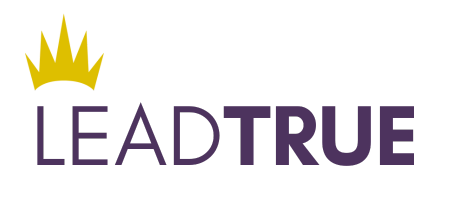How To Stop Being Afraid Of Making Mistakes
“On your leadership journey, you will fail. Yet you are never a failure.”
Many of us have worked for corporations, served on boards, published articles and books, started businesses and spoken in front of thousands of people for decades – and we still feel anxiety before an important meeting, a new client workshop or stepping behind the podium. Our hands sweat. Our pulse quickens. Our stomachs churn.
We are nervous. But we are not afraid of making a mistake.
It’s a natural phenomenon for adrenaline to surge through the body when you are taking a risk or are in a vulnerable position. This is a normal part of the human experience that needs to be embraced and accepted.
However, there is quite a bit of monkey business to our thinking that we can manage. Sabotaging thoughts and outdated beliefs can cause us to overthink, second-guess, stall and miss out on opportunities. There is internal pressure to be perfect, to get it right, to avoid making mistakes and to protect ourselves from judgment. We call this our Inner Critic who, when left unchecked, is no longer protecting us. Instead, this inner voice is stopping us from being our most vibrant, powerful self.
This pressure may come from a positive place, like a desire to do well, a commitment to quality and a dedication to a team’s success. Yet, when your fear of making a mistake takes over the controls and paralyzes you from acting or plummets you into a deep pit of anxiety after you’ve delivered your presentation or had your meeting, an adjustment is needed.
It’s important to understand that you will make mistakes. We all do.
As women leaders, we need to develop our confidence to speak up or take action, even if we might get it wrong.
Of course, you want to be thoughtful and have purpose behind your words or your actions. Not caring about offending others or causing thoughtless, irresponsible problems is not what we are talking about. Continue doing what you know to do to understand the issues and your audience. In fact, do what you know to do, without hesitation. This is a thrilling, necessary part of growing as a leader and expanding your influence.
If you do make a mistake, the integrity with which you recover is incredibly powerful. People would rather follow someone who stretches purposefully, fails, and recovers with integrity than someone worried about appearing flawless all the time.
We know this is not easy, yet it is possible. Here are our personal best practices.
1. Have a growth mindset.
Carol Dweck has found in her research two mindsets we create at a very young age that shape our relationship with success and failure professionally and personally as well as our capacity for happiness.
A “fixed mindset” assumes our personality, intellect, and creativity are static givens which can’t be materially changed. It also posits that success is the affirmation of our intellect, an assessment of how those givens perform against a fixed standard. Striving for success and categorical avoidance of failure become a way of maintaining one’s image of intelligence or skill.
A “growth mindset,” on the other hand, embraces challenge and sees failure as a heartening springboard for growth and for stretching our existing abilities.
We have found that our clients who have a growth mindset understand the role of mistakes and feel less fearful of making an error.
For example, a fixed-mindset leader sees herself as the one in charge, the top dog. She wants to be needed by her team and feels a cut above others. She needs to be in control to protect her image and her position.
A growth-mindset leader learns to relinquish control and invite others to fully participate, which ultimate involves vulnerability. This can be a huge revelation for our clients as they shift from managing and controlling to truly leading.
One client shared it like this: “What’s been on my mind a lot has been control… Gosh, is it really that I feel like I want to control everything?”
Upon recognizing that the underpinnings of her desire for control (with her team) was a need to be the “Big Kahuna”, she began taking immediate actions—coming to the table predisposed to listen to their ideas, asking strategic questions, supporting quality decision-making and holding everyone graciously accountable—ultimately recognizing that if a mistake is made, we all learn from it. This made her vulnerable, but it started her down the road of the growth mindset.
2. Develop a sense of inner purpose.
Taking the time to reflect on your purpose creates an inner source of confidence in spite of circumstances. Of course, doing something that is seen as a great success by others is quite validating. Celebrate during those times. And, if you fail, you know that you were motivated by a deeper purpose, which makes you more capable of dusting yourself off, learning the important lesson and moving on.
The Tiara Model for True Leadership ensures that each of our clients identifies their unique source of inspiration. This inner knowing motivates action that is on purpose regardless of outcome.
3. Ask yourself, “What’s the worst thing that could happen?”
This question has helped us slice through our internal drama and our inflated fears to confront the worst-case scenario. In many situations, we advocate focusing on the positive and imagining your ideal outcome. However, if you are frozen with fear, a clear look at the worst possible outcome can be remarkably freeing. We have used this question with clients moving to other countries, starting their own businesses, asking for a flexible work schedule or preparing for TED Talks.
Every time, the worst-case scenario is something they could surprisingly handle. Hence, the question quieted the Inner Critic so they could take action.
No, the fear is not going to disappear entirely. After all, your Inner Critic is part of your leadership journey. It’s admirable to be motivated to do your best. Yet, when your fear of making mistakes takes over, it’s time to create an internal foundation of strength, confidence and purpose that will motivate you to take action that is in line with who you really are as a leader.

